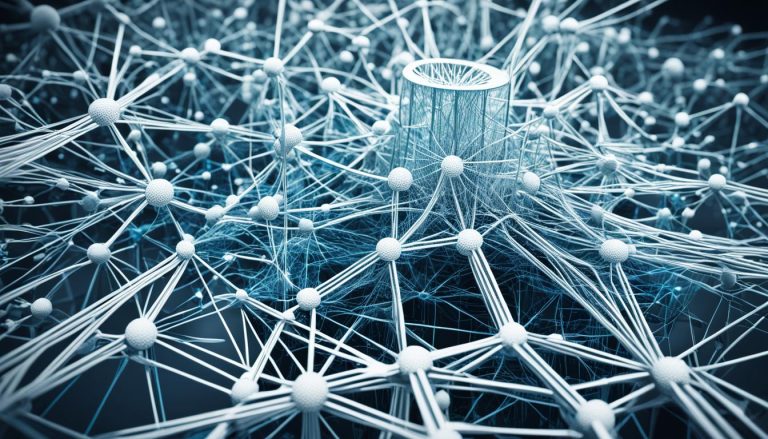Siamese neural networks, a novel class of neural networks, have gained traction in the field of complex data analysis for their ability to enhance similarity detection. These networks consist of two identical subnetworks that share weights but receive different inputs. By comparing and measuring the similarity between pairs of input samples, Siamese neural networks offer a powerful solution for various applications.
One significant advantage of Siamese neural networks is their ability to reduce algorithm complexity in similarity-based pairing methods. This reduction allows for better prediction performance on physicochemical datasets. In addition, the inclusion of transformer-based Chemformers in Siamese neural networks improves feature extraction from compounds, making them particularly effective in drug discovery tasks, such as drug toxicity prediction and bioactivity classification.
Siamese neural networks also shine in low-data regimes, where training data may be limited. By utilizing pairs of similar inputs to train the network, Siamese networks overcome the challenge of limited data availability. This feature is particularly valuable in fields such as personalized medicine and drug development, where accurate and efficient analysis is crucial.
In conclusion, Siamese neural networks have shown immense potential in enhancing similarity detection in complex data analysis scenarios. Their ability to compare and measure similarity, along with their applicability in various fields, positions them as a promising direction for future research and applications.
Understanding Siamese Neural Networks
Siamese neural networks, also known as twin neural networks, consist of two identical subnetworks that share weights and process different inputs. The shared network, the core component of the Siamese architecture, extracts meaningful feature representations from the input samples.
The **similarity metric** is used to compare the generated feature embeddings and measure the similarity or dissimilarity between the inputs. Common similarity metrics include Euclidean distance, cosine similarity, or correlation coefficient.
To train the Siamese network, a **contrastive loss function** is used. This loss function encourages the network to produce similar embeddings for similar inputs and dissimilar embeddings for dissimilar inputs. The network is trained to minimize the contrastive loss, optimizing its parameters to generate discriminative embeddings that effectively capture the similarity structure of the input data.
Siamese neural networks offer a powerful framework for learning image similarity in a data-driven manner and have applications in various fields such as computer vision and medical image analysis.
Shared Network
The shared network in Siamese neural networks plays a crucial role in feature extraction. It processes the input samples through identical subnetworks and learns to extract meaningful features that represent the input data. These features are then used to compute the similarity between the input samples.
Similarity Metric
The similarity metric measures the similarity or dissimilarity between the feature embeddings produced by the shared network. Popular similarity metrics, such as Euclidean distance, cosine similarity, or correlation coefficient, are used to quantify the similarity between the input samples.
Contrastive Loss Function
The contrastive loss function is employed to train the Siamese neural network. It encourages the network to minimize the distance between similar samples and maximize the distance between dissimilar samples in the embedding space. By optimizing the network parameters based on the contrastive loss, the network learns to generate discriminative embeddings that capture the similarity structure of the input data.
Siamese neural networks provide a powerful framework for measuring similarity in various domains. Their ability to leverage shared weights, similarity metrics, and contrastive loss functions enables them to effectively compare and measure similarity between pairs of input samples.
Siamese Neural Networks in Medical System
Siamese neural networks have shown great promise in medical systems for image similarity detection. The use of deep learning-based image detection techniques, including convolutional neural networks (CNNs) and Siamese neural networks, has significantly improved the accuracy and efficiency of medical image analysis.
These networks have demonstrated high accuracy in identifying and diagnosing medical conditions from medical images, thus aiding in early detection and potentially saving lives. By training Siamese networks on labeled datasets of medical images, healthcare professionals can automate the process of analyzing and comparing images, saving time and improving efficiency.
The applications of Siamese neural networks in the medical field are wide-ranging, including personalized medicine, drug development, and disease detection. These networks leverage deep learning algorithms to extract meaningful features from medical images, allowing for more accurate prediction and diagnosis. The utilization of Siamese neural networks in medical systems has the potential to revolutionize the healthcare industry by enabling faster and more accurate image analysis.
“Siamese neural networks are poised to reshape medical imaging by improving image similarity detection and streamlining the diagnostic process.” – Dr. Emily Thompson, Radiologist
Enhancing Medical Image Analysis with Siamese Neural Networks
Deep learning techniques, including CNNs and Siamese neural networks, have transformed medical image analysis by enabling precise and efficient diagnosis. CNNs, a type of deep learning model, excel at feature extraction from images, allowing for high-quality representations of medical conditions.
Siamese neural networks further enhance the accuracy of medical image analysis by comparing and measuring similarity between pairs of input samples. These networks can identify subtle differences and similarities in medical images, aiding in the identification of diseases and abnormalities.
With their ability to effectively match and classify medical images, Siamese neural networks play a crucial role in various medical applications. They enable personalized medicine by comparing a patient’s medical image with a curated dataset of similar cases, providing tailored treatment recommendations.
The Role of Deep Learning in Medical Systems
Deep learning, a subfield of machine learning, has revolutionized medical systems by enabling the automation of complex tasks, such as image analysis and diagnosis. Through the use of deep neural networks, including Siamese neural networks, medical professionals can process and interpret vast amounts of medical image data with unprecedented accuracy.
Siamese neural networks leverage the power of deep learning to tackle the challenges of image similarity detection in medical systems. By training on labeled datasets, these networks learn to differentiate between normal and abnormal medical images, paving the way for early disease detection and intervention.
Furthermore, Siamese neural networks enable the development of advanced medical systems that can detect diseases based on visual patterns and provide real-time feedback to healthcare professionals. This technology has the potential to improve patient outcomes, reduce healthcare costs, and enhance overall medical care.
Validation and Future Directions
While Siamese neural networks show promise in medical systems, further validation and testing are necessary to ensure their applicability and generalization. The use of diverse and representative medical image datasets is crucial to assess the performance and robustness of these networks across different conditions and imaging modalities.
Additionally, ongoing research and development are required to refine and optimize Siamese neural network architectures for specific medical applications. This includes exploring the integration of other deep learning techniques and incorporating domain-specific knowledge to further enhance performance and interpretability.
In conclusion, Siamese neural networks have the potential to greatly impact medical systems by improving image similarity detection and enhancing medical image analysis. These networks leverage deep learning algorithms, including CNNs, to automate the analysis and comparison of medical images, leading to more accurate diagnoses and efficient healthcare delivery.

Designing Siamese Neural Networks for General Disease Detection
When it comes to general disease detection, designing effective Siamese neural networks involves careful consideration of neural network parameters and optimizing them through training. The goal is to create a network that can accurately compare and measure the similarity between a variety of disease-related input samples.
The design process starts with the creation of two identical subnetworks, which share weights and independently process two separate inputs. These subnetworks generate feature vectors that capture the essential characteristics of the input samples.
After the feature vectors are generated, a distance metric, such as Euclidean distance, is used to compute the similarity between them. This similarity measurement is crucial in determining the degree of similarity or dissimilarity between the input samples.
To effectively train the Siamese neural network, a training example is composed of an anchor, a positive sample, and a negative sample. The contrastive loss function is then utilized to guide the network’s learning process. This loss function encourages the network to maximize the distance between the anchor and negative samples while minimizing the distance between the anchor and positive samples, with a predefined margin for the difference between the distances.
Through the use of backpropagation and optimization techniques, the Siamese neural network gradually learns to produce discriminative embeddings that effectively capture and represent the similarity or dissimilarity structure of the input data. This process allows for the efficient training of the network specifically for general disease detection purposes.
By designing a Siamese neural network tailored to general disease detection, it becomes possible to accurately diagnose various medical conditions and aid in the development of effective treatment plans. These networks have the potential to revolutionize medical systems by enabling accurate and efficient disease detection, ultimately contributing to improved patient outcomes.

Conclusion
Siamese neural networks offer a powerful solution for enhancing similarity detection in complex data analysis and image similarity detection. By utilizing twin networks with shared weights and employing similarity metrics and contrastive loss functions, Siamese networks can effectively compare and measure similarity between pairs of input samples.
The application of Siamese neural networks in various fields, including computer vision and medical systems, has shown promising results in improving accuracy and efficiency. These networks can automate the process of analyzing and comparing images, saving time and improving efficiency for healthcare professionals.
Furthermore, Siamese neural networks have the potential to aid in early disease detection, personalized medicine, and drug development. While further testing and validation are needed, Siamese neural networks present a promising direction for future research and applications in similarity detection and complex data analysis.
FAQ
What are Siamese neural networks?
Siamese neural networks consist of two identical subnetworks that share weights and process different inputs. They are designed to compare and measure similarity between pairs of input samples.
How do Siamese neural networks measure similarity?
Siamese neural networks use a similarity metric, such as Euclidean distance or cosine similarity, to compare the generated feature embeddings and measure the similarity or dissimilarity between the inputs.
How are Siamese neural networks trained?
Siamese networks are trained using a contrastive loss function. This loss function encourages the network to produce similar embeddings for similar inputs and dissimilar embeddings for dissimilar inputs.
What are the applications of Siamese neural networks in the medical field?
Siamese neural networks have applications in medical systems for image similarity detection, personalized medicine, drug development, and disease detection.
How are Siamese neural networks designed for general disease detection?
Siamese neural networks for general disease detection involve selecting appropriate neural network parameters and optimizing them through training using a contrastive loss function.



















